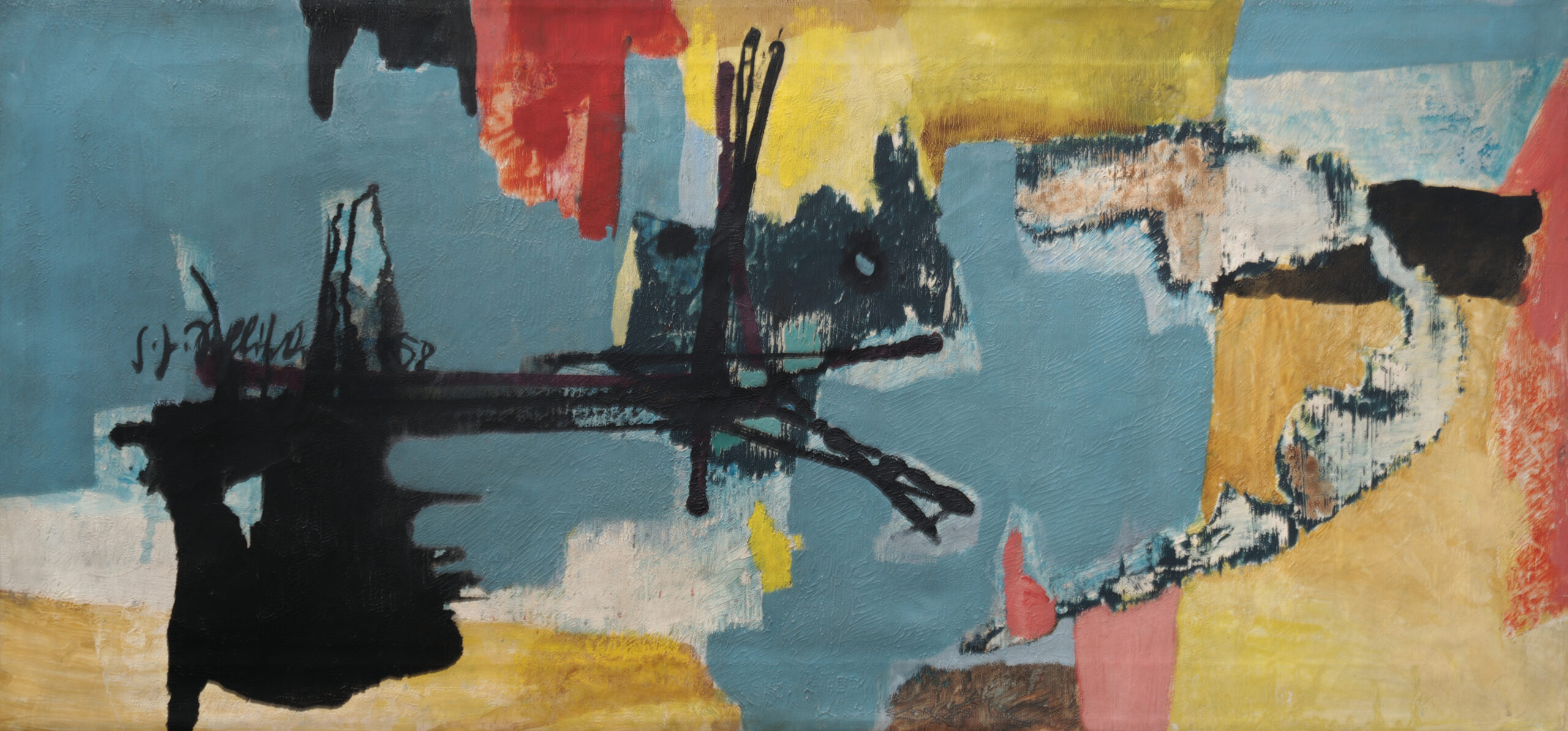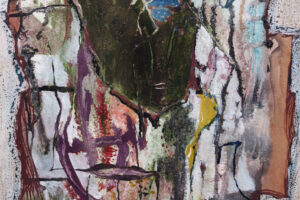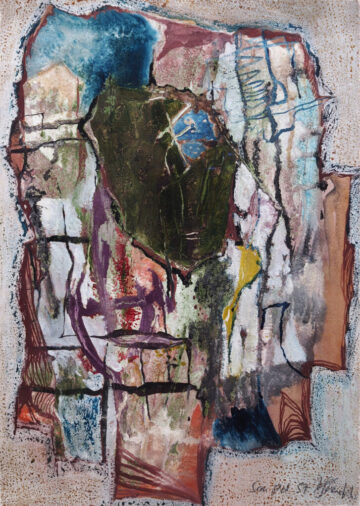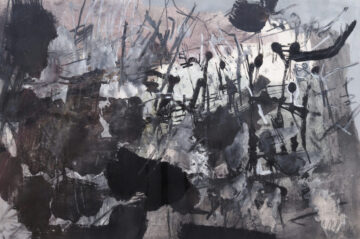Deutsch | Englisch
Schlieker belongs to the second generation of abstract artists in Germany – one whose formative years unfolded in a land of barbarism and a world at war. In the post-war era, these artists pioneered a German style of abstract expressionism, in the art world also called „action painting“, „Tachism“, or „Informel“.
The style embraced non-objective, gestural, and spontaneous expression, freed from formal constraints, and focused on the tactile, material quality of color itself. Art was no longer subject to the aesthetic dictatorship of the Nazi regime, where all forms of artistic abstraction were banned and called “entartet”.
Painting should exist purely as painting: free from the illusion of perspective, unburdened by didactic content, unencumbered by untruths. An artwork should require no hidden mythology, and it should only reach completion in the mind of the viewer.
While Schlieker’s artistic expression remained primarily figurative until the late 1940s, the 1950s marked a decisive shift to abstraction. That decade was also one of significant personal transitions: he married, relocated from Hamburg to the beating industrial heart of Germany – the Ruhrgebiet – and welcomed his first and only child, Claudia, my mother.
It was during this transformative period that some of the earliest works in the Geneva collection were created, including a small, vibrant oil-on-canvas painting from 1958, and several works on paper produced between 1957 and 1959.
To understand Schlieker – and many artists of his generation – one must grasp the profound longing for liberation and new beginnings that defined their era.
But of course, none of this was evident to me as a young boy born over twenty years after his first foray into abstraction. My memories of him are primarily those of a man who created a whirlwind of creative chaos in his studio. Sometimes one could wade knee-deep through piles of colorful paper scraps. I also vividly remember a man who always had a funny, occasionally risqué, joke ready to lighten any stiff situation.
My grandfather’s deliberate yet humorous rejection of constraints and conventions extended far beyond brush and canvas – which, of course, we children thought was fantastic.
And yet, to attribute his work solely to the „Zeitgeist“ would be to tell only part of the story. A comparison between his 1957 painting „San Pol“, created on the small island San Pol off the coast of Naples in Italy, and his predominantly black-and-white work from 1959, likely painted on a winter day in his hometown of Bochum, highlights how profoundly his art was influenced by the environment and atmosphere in which it was conceived.
Critics would later frequently observe that Schlieker’s ability to perceive, internalize, and reinterpret nature and landscapes was a defining hallmark of his creative process.






